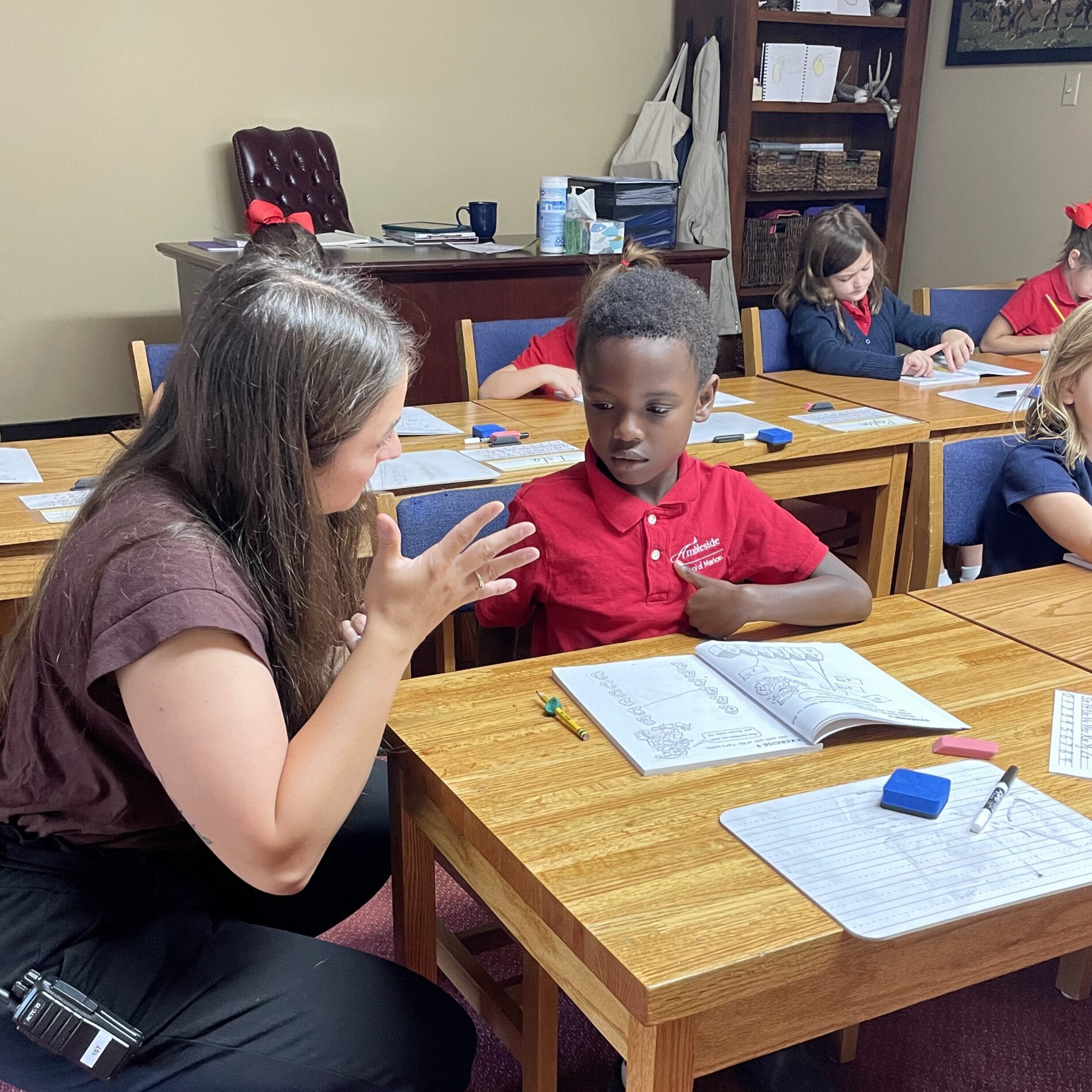Ambleside Schools International Articles

Image courtesy of Calvary Schools of Holland.
Browse more Ambleside Schools International Resources.
Atmosphere in the Home Part 1: Hearth or Furnace
Walk into any school, church, organization, or home and we immediately get a sense of the community’s or family’s relational dynamics. We observe persons relating both to other persons and to things. We discern what is expected and what is valued. We notice if persons are glad to be together or anxious, if persons are sensitive to the needs of others or pre-occupied with self. We notice if furniture is ordered for conversation or focused on a screen. Without any words being spoken, we recognize about the place a certain relational air. Charlotte Mason identifies this relational air as the “atmosphere.”
In the home, parents are responsible for creating and maintaining a healthy atmosphere where children can experience love, joy, and peace. While there are many aspects of atmosphere, this post focuses on how the physical space of our homes impacts the atmosphere within them.
A century ago, family structures and living spaces were quite different. At a recent family gathering, my mom, aunts, and other relatives shared memories of what their home was like when they were growing up. They described two central spaces: the living room and the kitchen. Their mother would sing hymns while baking bread, with all the daughters helping. The brothers worked in the fields with their father, and sometimes the sisters joined them. Dinner was a family affair, followed by storytelling, singing, and visits from neighbors and relatives. At bedtime, siblings would gather in their shared bedroom to read aloud from a novel. This was a typical day for their family.
This picture contrasts sharply with today’s cultural norms. Life moves at a faster pace; sports practices, music lessons, video games, TV shows, and personal devices occupy much of our leisure time. Evening meals, if eaten together, are often quick and easy recipes. Our busy, individualistic society leaves little room for intentional family time.
My parents, like the generation before them, experienced drastic changes throughout their lives, with huge advances in technology and industry. Have these advances improved our family and home life? Have they helped or hindered our ability to create positive and healthy family structures?
My wife Megan and I now have two young children, and we have been reading Charlotte Mason’s writings and other books as we seek to establish and build a healthy family culture and atmosphere. We recently read Andy Crouch’s The Tech-Wise Family.1
Crouch offers a helpful analogy about the physical spaces in our homes and how we can use them purposefully to promote a healthy home atmosphere where all people in the family can flourish.
He explains that not long ago, every home had a hearth — a place that provided warmth, light, and creative entertainment. Families would gather around the hearth for cooking, eating, storytelling, reading, knitting, passing of infants from knee to knee, and joining together over beautiful things that provide opportunities for connectedness and shared joy.
Today, though, instead of a hearth we have a furnace. Furnaces require little from us. They run on their own and provide easy warmth, but they do not offer opportunities for connectedness or shared joy. Instead of a hearth, most homes now have various technologies for entertainment.
Crouch challenges readers to find the emotional center of their home — the place where the family spends the most time and energy — and take inventory of what they see. Are the most visible things more like a hearth or a furnace?
Megan and I found this challenge deeply convicting. We began to seriously consider how we could make our own home more like a hearth and less like a furnace. How could we change our physical spaces to better reflect our values and promote creativity, relationships, and connectedness?
Every family will have their own approach. Megan and I started with the living room, the central space where we spend most of our time together.
Previously, alas, our living room centered around a TV. A couch and chairs were arrayed around it. There was a video game console and Bluetooth speakers attached to it. We had some random art on the walls. There was a gas fireplace at the rear of the room. While this setup may sound typical, it certainly did not promote creativity, relationships, or connectedness, and it did not reflect our family values.
We decided to move the TV to our unfinished basement and make the fireplace the room’s centerpiece. Occasionally, we bring the TV back up for family movie nights, but it returns to the basement soon afterward. We added more beautiful art and framed poetry to the walls, moved our record player into the room, and built a stand to display our records. The TV stand became shelving for records and books. We relocated our musical instruments to this room and added creative materials like cross-stitch supplies, children’s crafts, favorite books, and drawing materials.
We love this room and spend a lot of time together here. I often play music with my two sons, sharing the joy of beautiful music. My younger son, not yet two, enjoys playing the harmonica while I play guitar and sing old gospel hymns or folk tunes. We read books together with a Mozart record playing softly in the background. Our living room has transformed from a place of passive entertainment to a space that promotes active creativity, engaging relationships, and connectedness. It displays beauty and inspires us to grow in our relationships.
As we all work on establishing a healthy atmosphere in our homes and family structures, consider Crouch’s challenge: are the most visible things [in your home] more like a hearth or more like a furnace?”
Ben Sytsma
1 Andy Crouch, The Tech-Wise Family, (Grand Rapids, MI: Baker Books, 2017), 73.



